One of the construction projects Mackinac State Historic Parks is currently undertaking on Mackinac Island is a new public restroom shelter located behind Fort Mackinac across Huron Road from the Scout Barracks. The trenches for the building footing, and electrical, water and sewer services were excavated last fall. Because there were buildings associated with the fort in this area in the mid-nineteenth century, archaeological monitoring of these excavations took place.
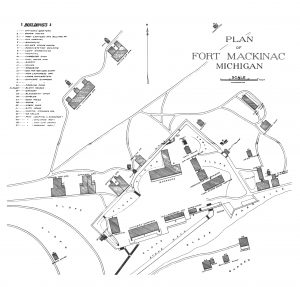
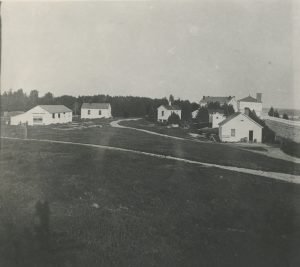
Fort Mackinac was in a constant state of construction and repair throughout its existence. The military complex included many buildings located outside the fortification walls. Some of these, such as the officers’ quarters, post hospital, and barn are still standing today. Two buildings were in the vicinity of the project area, the carpenter shop, and the coal house and shed, which were one structure. The carpenter shop was constructed around the time of the Civil War. The coal house and shed were constructed around 1879. All were demolished in 1913.
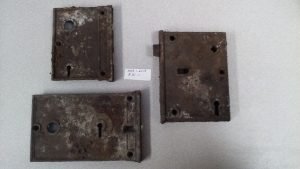
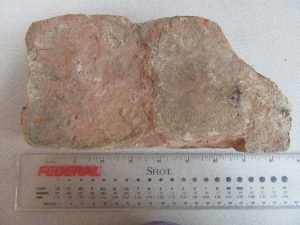
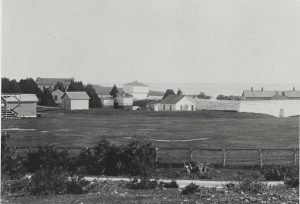
Although a variety of building materials were encountered during the monitoring, including nails, window glass fragments, hinges, door locks, and bricks, they were jumbled together with other refuse, suggesting dumping rather than deposition in their original location. This is especially true of the bricks, which are almost certainly from the powder magazine. The brick powder magazine was constructed around 1876 near where the Scout Barracks now stand. For many years it was noted as the only brick building on the island (Kelton’s Annals, 1894, p.95). It was demolished in 1913, and apparently the rubble was used to level in low spots in the project area.
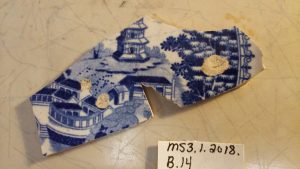
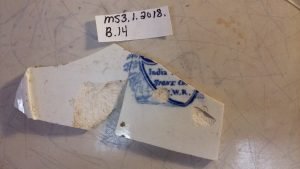
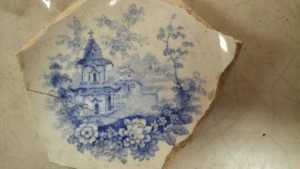
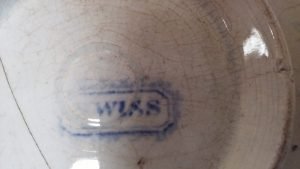
The project area is relatively flat now, but it appears that was not always the case, as the thickness of the artifact layer varied with the underlying, uneven limestone. The majority of the artifacts found were domestic refuse, butchered large animal bones and broken dishes. Archaeologists love ceramics because the pieces survive well in the ground, and their changing composition and decoration is well documented. In general, ceramics found in the northern area of the project were earlier than those found in the southern area. Ceramic types from the early nineteenth century included blue-edged wares, hand-painted whiteware, and annular (banded) wares. Transfer-printed ceramics from Staffordshire, England were popular for most of the nineteenth century. Identifiable examples from this project included part of an “India Temple” pattern plate and part of a “Swiss” pattern bowl. The plate was manufactured by John & William Ridgway between 1814 and 1830. The bowl was manufactured by Ralph Stevenson between 1810 and 1832.
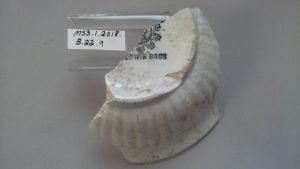
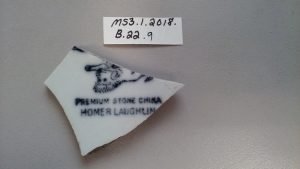
By the end of the nineteenth century, the most common affordable pottery was white ironstone manufactured in East Liverpool, Ohio. Marked examples from the project included part of a fluted bowl made by Godwin Brothers (1875-1893) and a flat sherd with part of a Homer Laughlin mark. Although the Homer Laughlin Company is still in existence, this particular mark was used from 1897 until 1904. It showed an upside-down British lion in the talons of an American eagle.
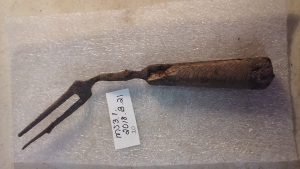
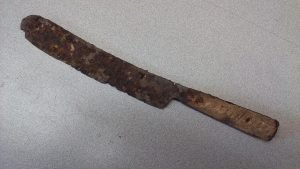
Other tableware recovered included the stem from a wine glass, a fork, two spoons and four knives.
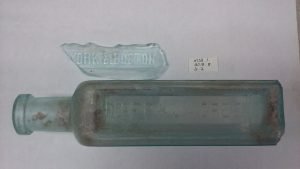
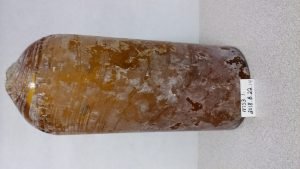
A few identifiable bottle fragments were found, including parts of two National Park Drug Store bottles. An almost intact bottle of Dr. Greene’s Nervura Nerve Tonic (1890s) and part of a second one were found on the northern edge of the project. A bulk Carter’s ink bottle, missing its neck, came from the southern area.
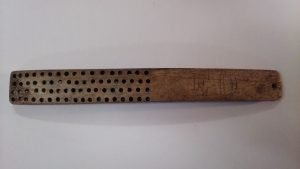
All of this refuse was dumped very near the fort, but the only artifacts that could be directly associated with the military were six .45-70 rifle shells. This was surprising because other Mackinac Island dumps have yielded military buttons and other uniform parts, and glass and ceramics marked by the U.S. Quarter Master Department. One very personal item, which may have belonged to a soldier, was a bone brush handle carved with the name or initials “ED.”
The new restroom shelter will provide a much-needed amenity for visitors to Mackinac Island. Archaeological monitoring of its construction provided glimpses of everyday life in the past through items once discarded as trash.









